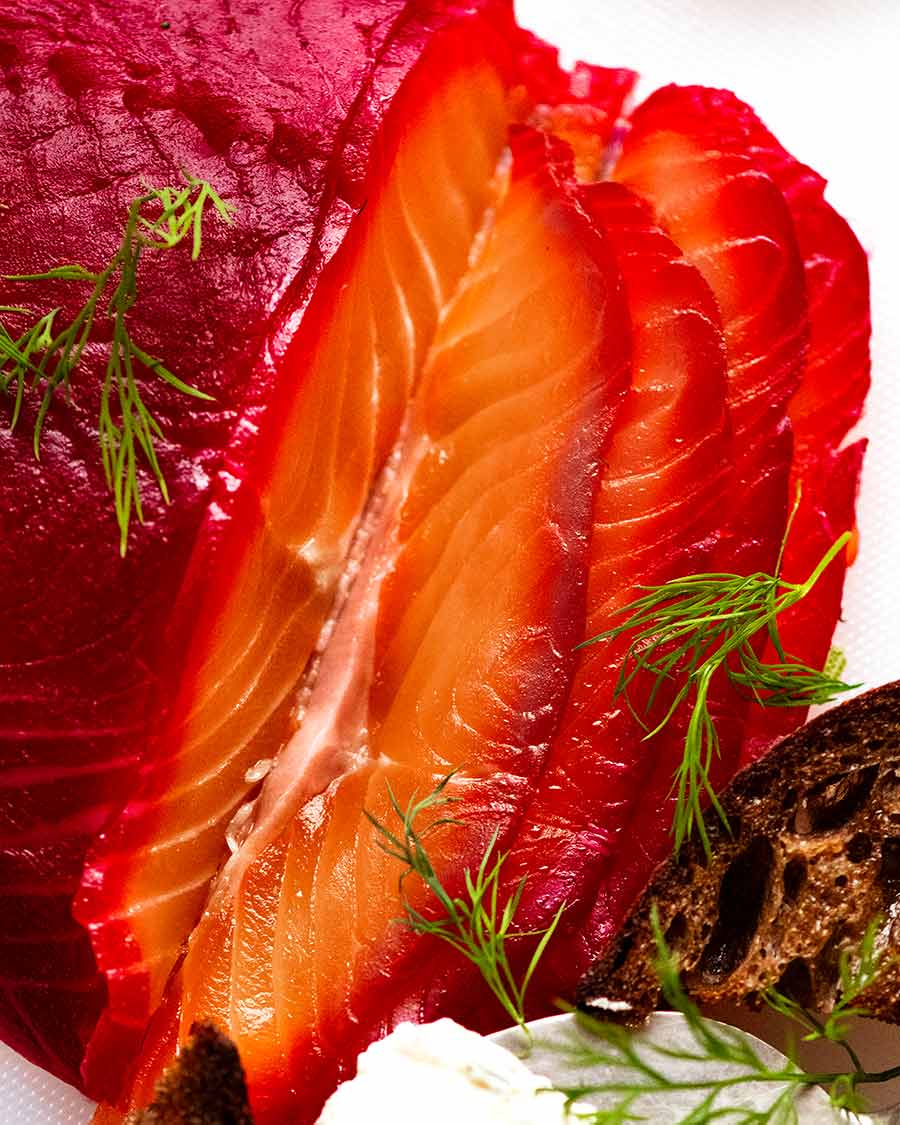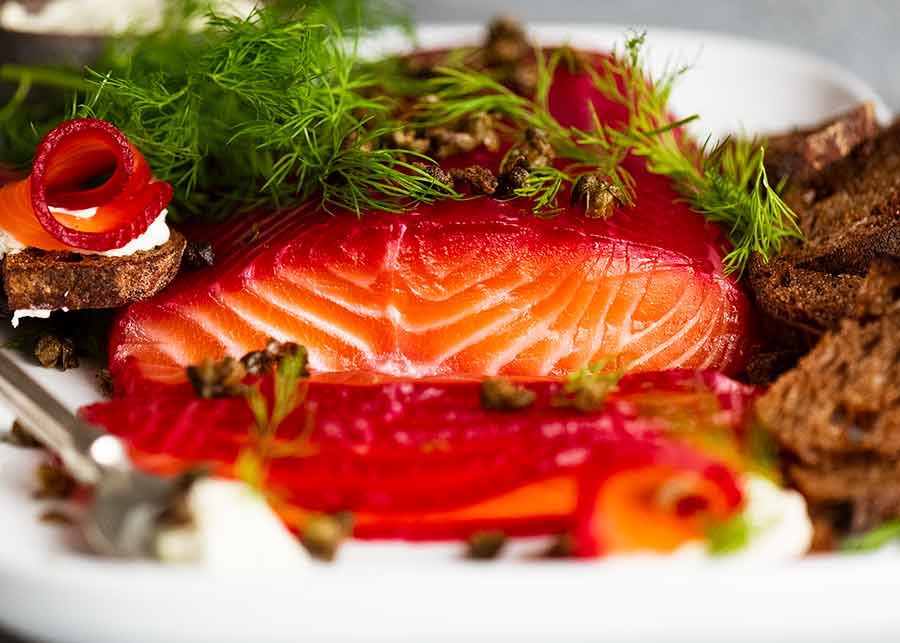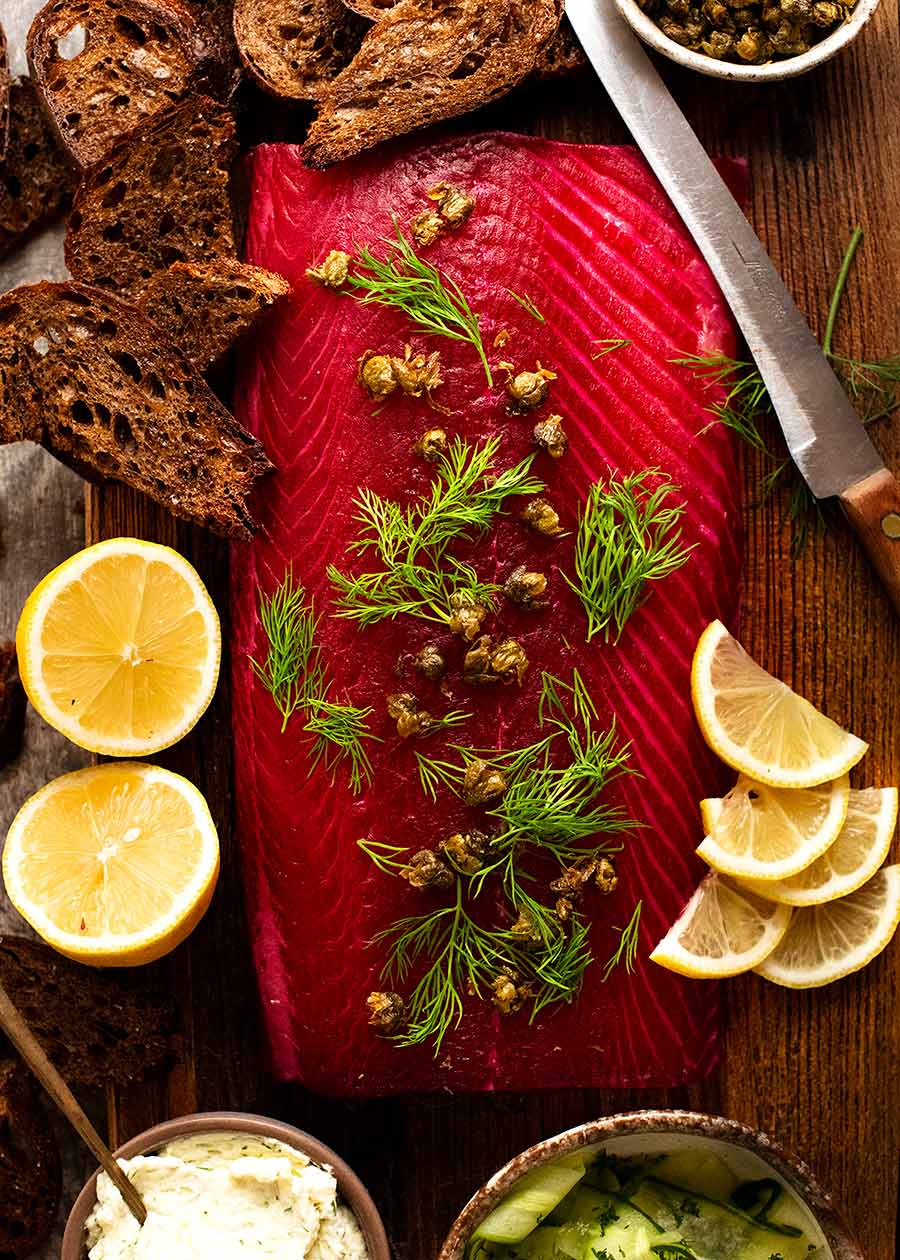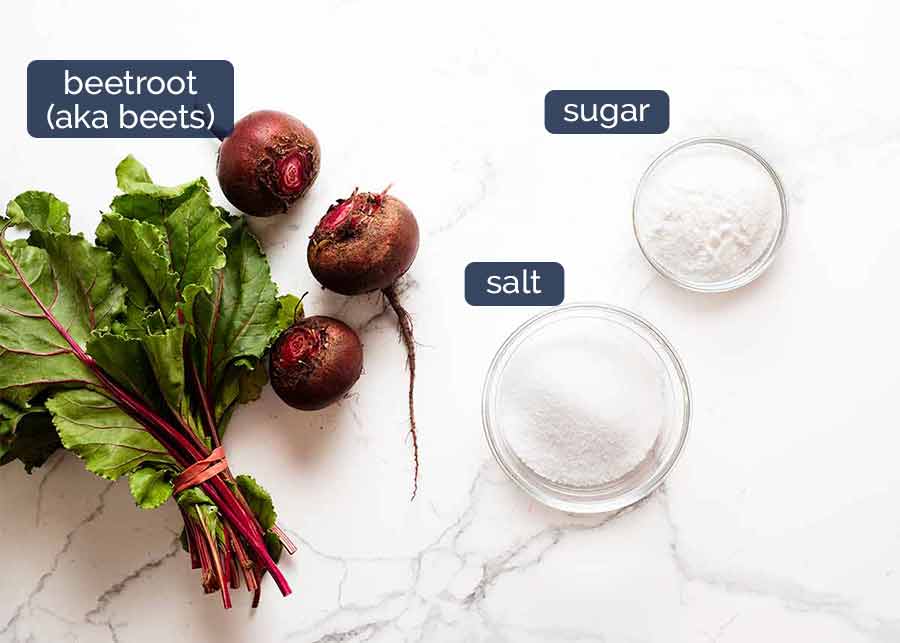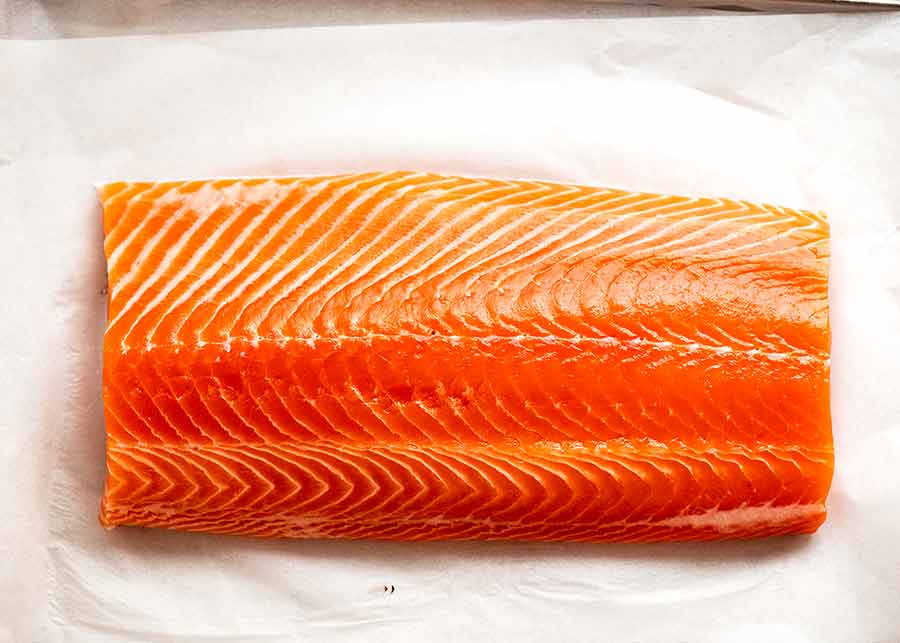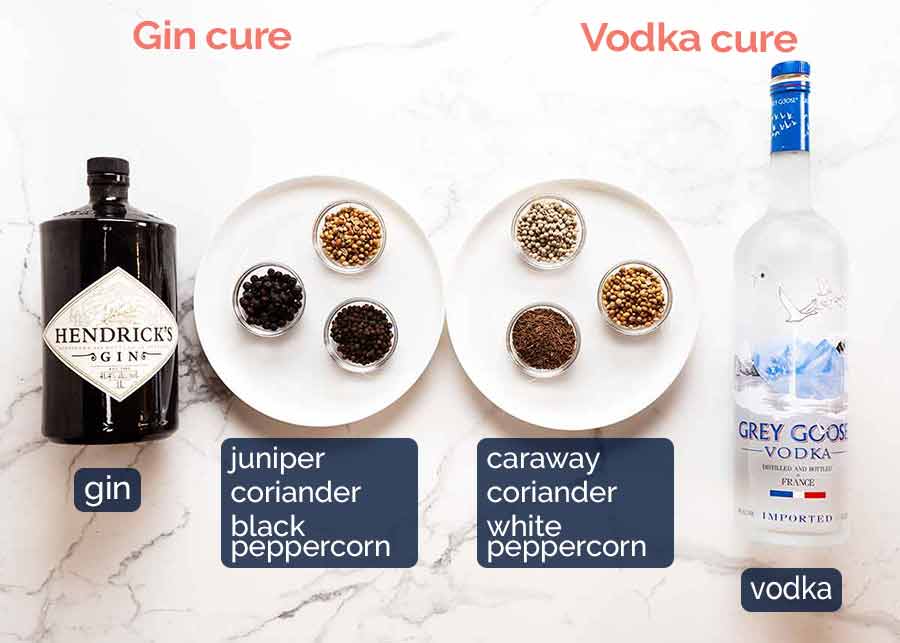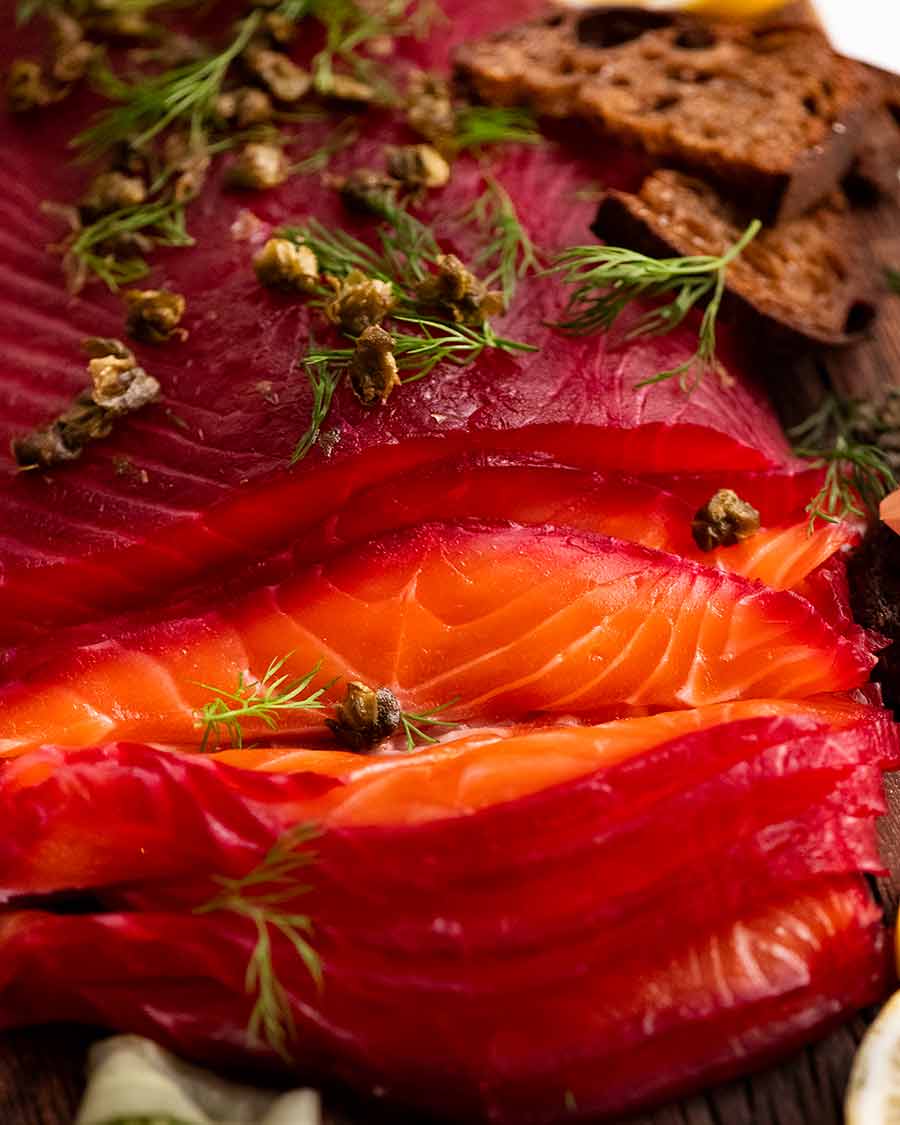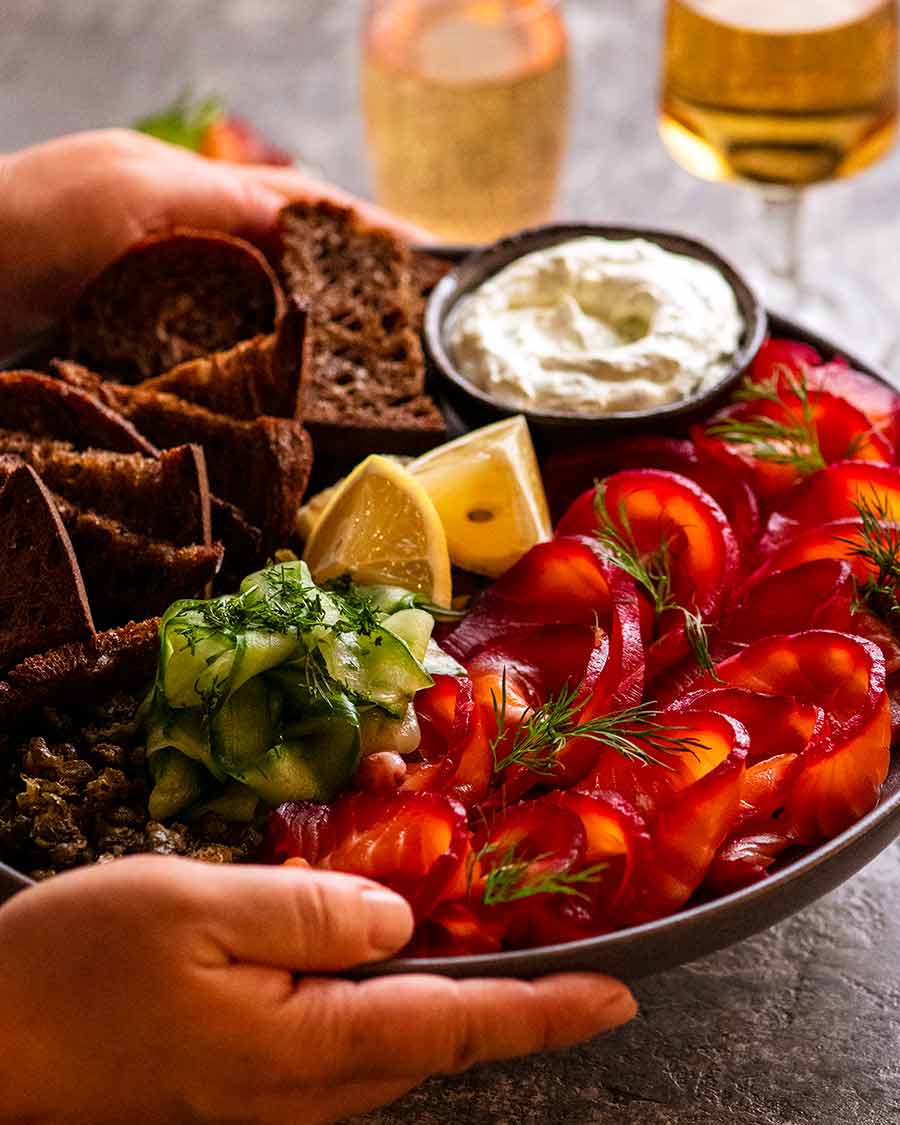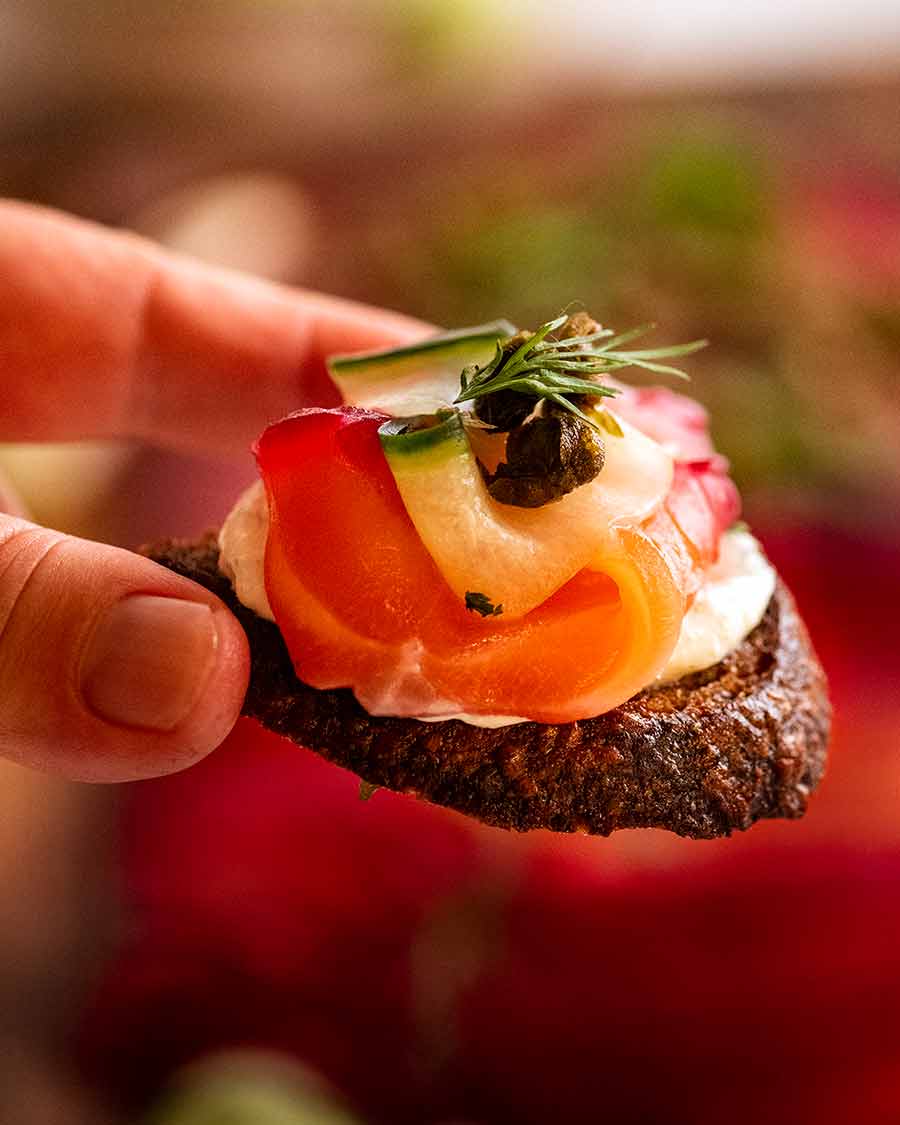This dish is a modern classic ideal for serving as canapés or an elegant starter, or just having around in the fridge so you can shave slices off to nibble. Lasts for days and days! Too many cured salmon recipes are way too salty or way too sweet! But once you know the right proportions, it’s ridiculously simple to make and far cheaper than buying from gourmet stores.
Beetroot-cured Salmon
Are you ready to impress the pants off your family and friends?? Deceptively easy, looks stunning and outrageously delicious to eat: Beetroot Cured Salmon!
What is Cured Salmon? And why cure at home??
Curing is an age-old means of preserving fish with salt. It also happens to transform the flavours and texture of the fish in delicious ways as the salt (as well as sometimes sugar) does its work. Like other preservation methods such as drying, smoking, pickling and so on, we have less of a need to cure for preservation purposes today. However we still apply these methods to food to appreciate their delicious eating qualities! Using beetroot in the curing process is an additional step you can do when curing fish that imparts a stunning maroon colour to the flesh surface and a subtle beetroot flavour! When sliced, the vivid contrast of colours between the beetroot-red and the orange salmon flesh is guaranteed to get everyone ooh-ing and ahh-ing!
Two flavour options: Gin or Vodka
But why stop at the beetroot colouring? Curing is also a great vehicle for injecting even more flavours into the flesh. So today I’m offering two variations of the beetroot cure using alcohol and spice flavourings for an additional touch (which I believe in fact is fairly traditional in Scandinavia – feel free to comment below if you know!): Not only is home-cured salmon child’s play once you know the right proportion of salt, sugar and flavourings, but it’s also far cheaper than buying equivalent shop-bought versions. I don’t know about where you live, but here in Sydney, tiny packets of similar cured-and-flavoured salmon are marketed as gourmet and sold for eye-watering prices.
What does it mean to salt-cure salmon?
Curing refers to a method of preserving salmon using salt and sugar to draw moisture out of the salmon and salt the flesh. This old technique originates in the Nordic countries and northern parts of Europe, where salmon in the rivers and oceans is plentiful but preserving foods was historically also an essential way of life. Curing extends the shelf life of raw salmon by depriving bacteria and other microorganisms of a cosy environment in which they can live and multiply easily. The process also alters the texture of the flesh, causing it to become firmer much like other cured meats (ham, salami etc). Curing furthermore provides the opportunity to add flavour into the salmon. Classic flavourings include fresh dill (for Salmon Gravlax), and gin or vodka plus spices which is what I am sharing in today’s recipe. “So is cured salmon raw?” Short answer: Yes. While the fish is technically raw (since it’s not cooked by heat), the fish is perfectly safe to eat, since the salt kills bacteria etc and inhibits their growth. Prosciutto, salami, and cold-smoked salmon are all examples of delicious foods that are cured but uncooked!
Ingredients for Cured Salmon
To make Beetroot-cured Salmon, you need: fresh salmon, sugar and salt (for curing), beetroot (for staining) and flavourings (gin or vodka + spices):
Fresh salmon – Ideally, sashimi-grade salmon is best. However it doesn’t need to be sashimi-grade (ie. fresh enough to eat uncured), because we’re going to cure it with enough salt to make sure it’s safe to eat. It does though still need to be very fresh! Check with your fish monger to ensure the fish is fresh enough to cure. But most importantly, check it yourself. If the salmon smells like the ocean and not “fishy”, and is firm to the touch it’s fresh enough. If it smells and looks funky, and the flesh is slimy, give it a miss….Trimming salmon – The piece of salmon pictured above is neatly trimmed so it’s a nice even rectangle shape, courtesy of the fish shop. If you get a whole side of salmon that is not trimmed, the tail end of the salmon is thinner, the belly is thinner and the head part will be cut on an angle. For the most even curing and best presentation, it is best to trim the salmon so it’s an even thickness and shape, like pictured below. You will need to start with a 1.5kg / 3 lb whole side of salmon:
Sugar and salt – These are the essential ingredients that cure the salmon. Both draw liquid out of the fish to preserve it. Why sugar too? Because the amount of salt required to cure salmon properly makes it way too salty. So sugar is an excellent way to share the curing work, while also balancing the flavours so it’s not just salt. Sugar doesn’t make the salmon sweet-tasting at all. Most smoked salmon, for example, uses sugar as well as salt.;Beetroot (aka beet) – This is what stains the outside of the salmon maroon, making for the striking appearance. It is mostly for aesthetics, any beetroot flavour is extremely subtle; andGin OR vodka plus spices (juniper or caraway, coriander and peppercorns) – These two spirits hailing from cold-weather countries famous for curing fish naturally work well here! I couldn’t decide between the two so I decided to provide both so you can choose. It really comes down to flavour preference – or drink preference! 😉 If you’re unsure, I’d opt for gin. The flavour is milder, smoother and a little more interesting. Also, you can get away with a more economical liquor (cheap vodka is pretty harsh!).The alcohol is totally optional however, and does not affect the cure if you leave it out. It’s still absolutely delicious without! See recipes notes for details.
What you need for Gin-cured Salmon
Gin – If you’re happy to drink it, it’s good for curing, that’s my rule! Hendrick’s brand is a firm favourite in my house. Tanqueray is also a frequent lurker in my liquor cupboard. But less premium brands absolutely work just as well. The gin flavour is not in-your-face, and people who are not a fan of gin for drinking will still love this cured salmon because the other flavours in it (the salmon and spices) are also prominent;Juniper and coriander – Classic spices that go with gin-cured fish that echo the key flavours of gin itself; andBlack peppercorn – Because pepper belongs in everything!
What you need for Vodka-cured Salmon
Vodka – As with gin, use your drinking vodka of choice. I find that I can taste the vodka slightly more than gin, simply because vodka has a slightly harsher edge to it. But again, as with the gin-cured version, I guarantee people who don’t actually enjoy drinking vodka will still devour the salmon because it’s a background rather than dominant flavour!;Caraway and coriander seeds – Excellent complementary spices that go with vodka for the cured fish; andWhite peppercorns.
The alcohol can be omitted!
For those of you wary about the use of alcohol in this cured salmon gravlax, note the following: Trimming salmon – The piece of salmon pictured above is neatly trimmed so it’s a nice even rectangle shape, courtesy of the fish shop. If you get a whole side of salmon that is not trimmed, the tail end of the salmon is thinner, the belly is thinner and the head part will be cut on an angle. For the most even curing and best presentation, it is best to trim the salmon so it’s an even thickness and shape, like pictured below. You will need to start with a 1.5kg / 3 lb whole side of salmon: The alcohol is totally optional however, and does not affect the cure if you leave it out. It’s still absolutely delicious without! See recipes notes for details.
How to make Beetroot-cured Salmon
I think you’re going to be amazed how easy this is! It really is mostly just about curing time, which involves nothing more than leaving it in your fridge. How long it takes to cure salmon: 48 hours for the actual curing, plus a recommended extra 12 – 48 hours resting time to allow the salt to redistribute more evenly throughout the salmon. And now for the best part: presenting the salmon! And of course basking in all those praises you are about to be lavished with!! 😉 (If you only have a large container, use scrunched up strips of foil under the cling wrap along the edges of the container to contain the surface area onto which the beetroot mixture spreads.) Line the container with two big sheets of cling wrap, overlapping and perpendicular like a cross. Make sure the cling wrap sheets are large enough to fully enclose the salmon once wrapped. Then spread the beetroot mixture onto the cling wrap inside the container; This is the curing process. The salt and sugar will draw moisture out of the salmon, in turn preserving fish and extending its shelf life. The flesh of the salmon will be thus drier and firmer than it is when raw; While this step is recommended, it’s not essential! It’s still wonderful eaten straight away. Since we serve it sliced thinly and usually draped on to bread with garnishes, most people don’t even notice that it’s saltier on the outside. It’s just for perfectionists like me who want to achieve the best result, given the time! 😂
How to serve Beetroot-cured Salmon
The whole point (ok, MOST of the point!) of using a beetroot cure for the salmon is so it looks STUNNING when it’s presented. So, let’s talk about serving it up, and all the bells and whistles we are going to add to make this a stunning platter to impress the pants off your family and friends! Pile it all up on a platter, and here is what you get:
You think that looks good? Just wait until you taste it!!! – Nagi x
Watch how to make it
Life of Dozer
No cured salmon for you, Dozer. You are not of legal age for alcohol consumption – you’re only 8!!
